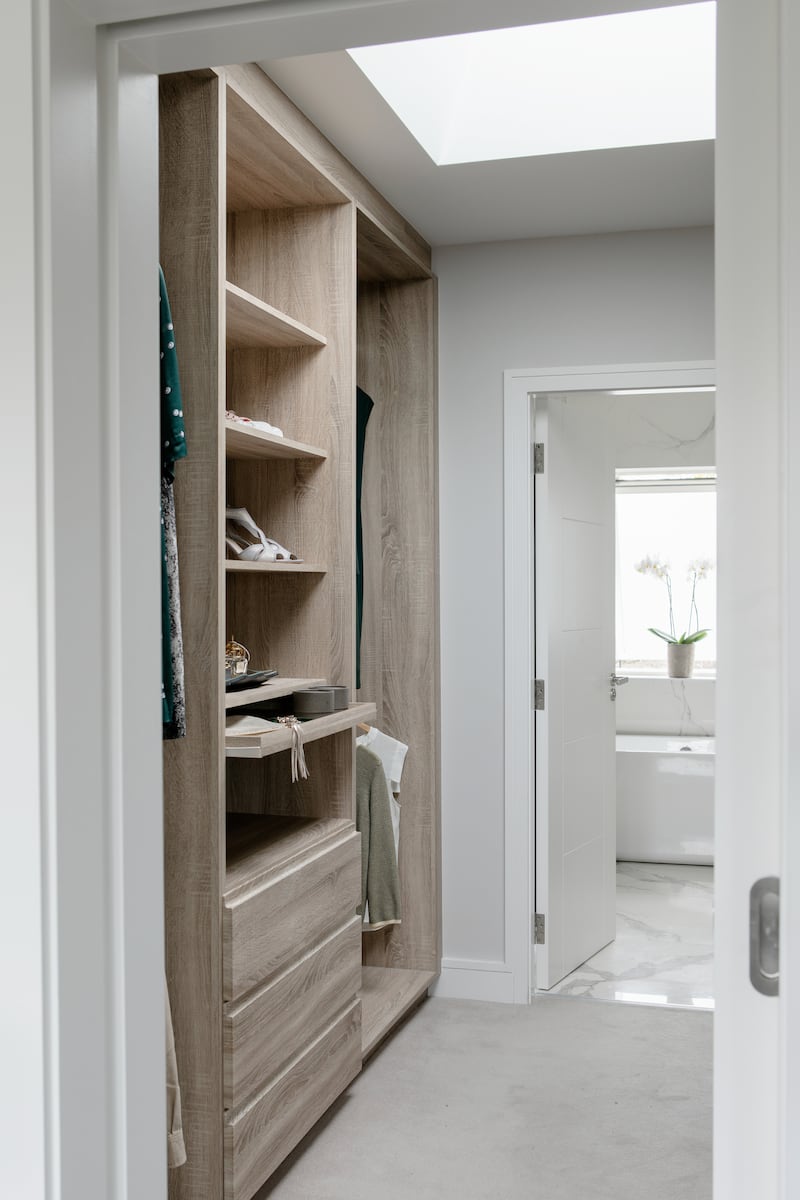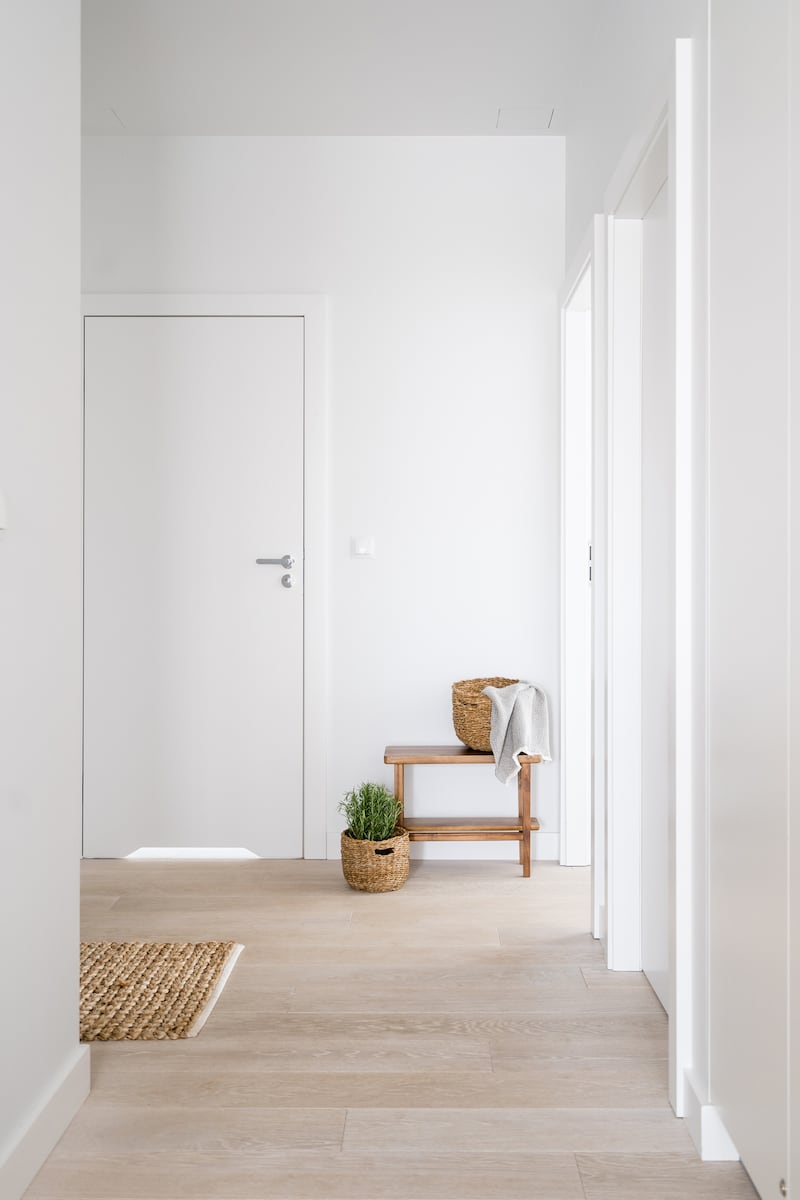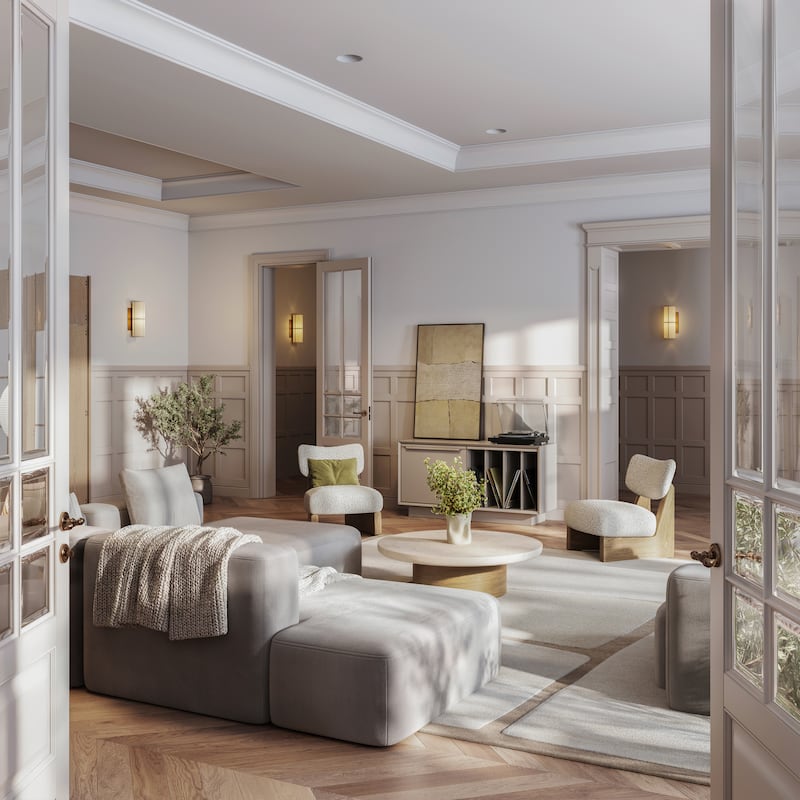Internal doors are a crucial part of any home, but they often get overlooked when it comes to design. More than just a functional necessity, they’re a chance to add some flair and sophistication to your living spaces. With a little bit of thought, you can choose the perfect internal doors to match your home’s style, making a big impact on the overall feel of your space. Here’s a look at some of the different options available to help you pick the right doors for your home.
Glazed doors

Glass doors are a great choice for lots of different areas of your house. They not only look fantastic, but also come with practical advantages. They can make your home feel more spacious and bright, which is especially useful in smaller homes or spaces when you want to maximise natural light.
One of my favourite ways to incorporate a glazed door is to swap out a solid door from a hall into a kitchen to reveal a view of the outdoors from the front door. Doing this will instantly elevate your entrance hall by brightening it and creating a lovely vista from the moment you open your front door.
When it comes to picking a door style, the options are endless. You can go for a simple Shaker-style door with a large single-glazed panel or the popular Crittall-style glass doors with their cool industrial look. Just remember to choose a style that complements your home’s architecture and decor.
You can also customise glass doors to get the level of privacy you need. You can choose frosted or fluted glass to let light in while keeping a sense of seclusion. Keep in mind that some glazed doors may offer less noise reduction than solid timber doors, so consider this when deciding which type is best for specific areas in your home.
Sliding and pocket poors

Sliding and pocket doors are excellent space-saving solutions that offer a practical approach to dividing rooms without the clearance needed by traditional hinged doors. Modern advancements in door technology have made these options more durable and reliable than ever.
Sliding doors operate by moving along a track, making them ideal for areas with limited space or where you want to create a seamless transition between rooms. With the right design, the door and track can become a visually striking feature of your space, sliding back to cover a section of the wall when open. To maximise their impact, choose a finish such as natural timber, or paint them in a contrasting colour to your walls.
Pocket doors slide into a hidden compartment within the wall, providing a sleek, minimalist look that optimises available space. Their ability to disappear from view contributes to an uncluttered aesthetic that improves the flow of your living areas. However, keep in mind that the installation of pocket doors requires an extra wall to conceal them, which may result in a slight reduction of space.
While these door types have numerous benefits, they may not be the best choice for every room. Sounds and smells can easily pass through pocket doors, making them less suitable for separating spaces such as kitchens, home offices, or bedrooms.
Pivot doors

Pivot doors offer a contemporary and sophisticated alternative to conventional hinged doors. Instead of being hinged to a door frame, pivot doors rotate around a central pivot point for seamless opening and closing. Imagine a door that rotates on a centre or off-centre axis like a revolving door with a single panel.
One of the key advantages of pivot doors is their space-saving design. As the door rotates on its axis, it occupies less space when opened compared with conventional hinged doors, which require a larger clearance area to swing open. This feature makes pivot doors an ideal choice for small rooms or narrow hallways where maximising space is essential.
Pivot doors are a versatile design choice as they can be made from a wide range of finishes and can also accommodate various sizes. Their bespoke nature allows for customisation to fit specific spaces or openings, offering a tailored solution to meet your unique requirements.
However, pivot doors’ bespoke nature can also make them more expensive than standard, off-the-shelf doors. They also require more intricate installation procedures than standard hinged doors, so seeking expert advice is essential to ensure the proper fit and functionality of your pivot doors.
Hidden doors

Hidden doors, characterised by concealed hinges and invisible door jambs, offer a minimalist and contemporary look to your home.
The concealed frames in these doors eliminate the need for architraves, enabling them to sit flush against the wall. When painted in the same colour as the surrounding walls, they create a seamless visual flow that makes them practically disappear from view.
This minimalist approach is particularly effective in narrow hallways or smaller rooms, where maintaining an open, spacious aesthetic is essential.
Heights and swings

The standard height for most doors is 2.1m. Opting for higher or full-height doors that extend up to the ceiling can make a bold design statement and create an airy and expansive feeling to your space.
When planning the height of your doors, leave ample space between the door frame and any decorative elements such as coving or architrave, particularly in classical interiors. A gap of at least 100mm is ideal to ensure a balanced and harmonious appearance.
Another crucial aspect to consider is the direction in which your internal doors open. Doors that swing into the room against a wall facilitate a more comfortable flow between spaces.


















